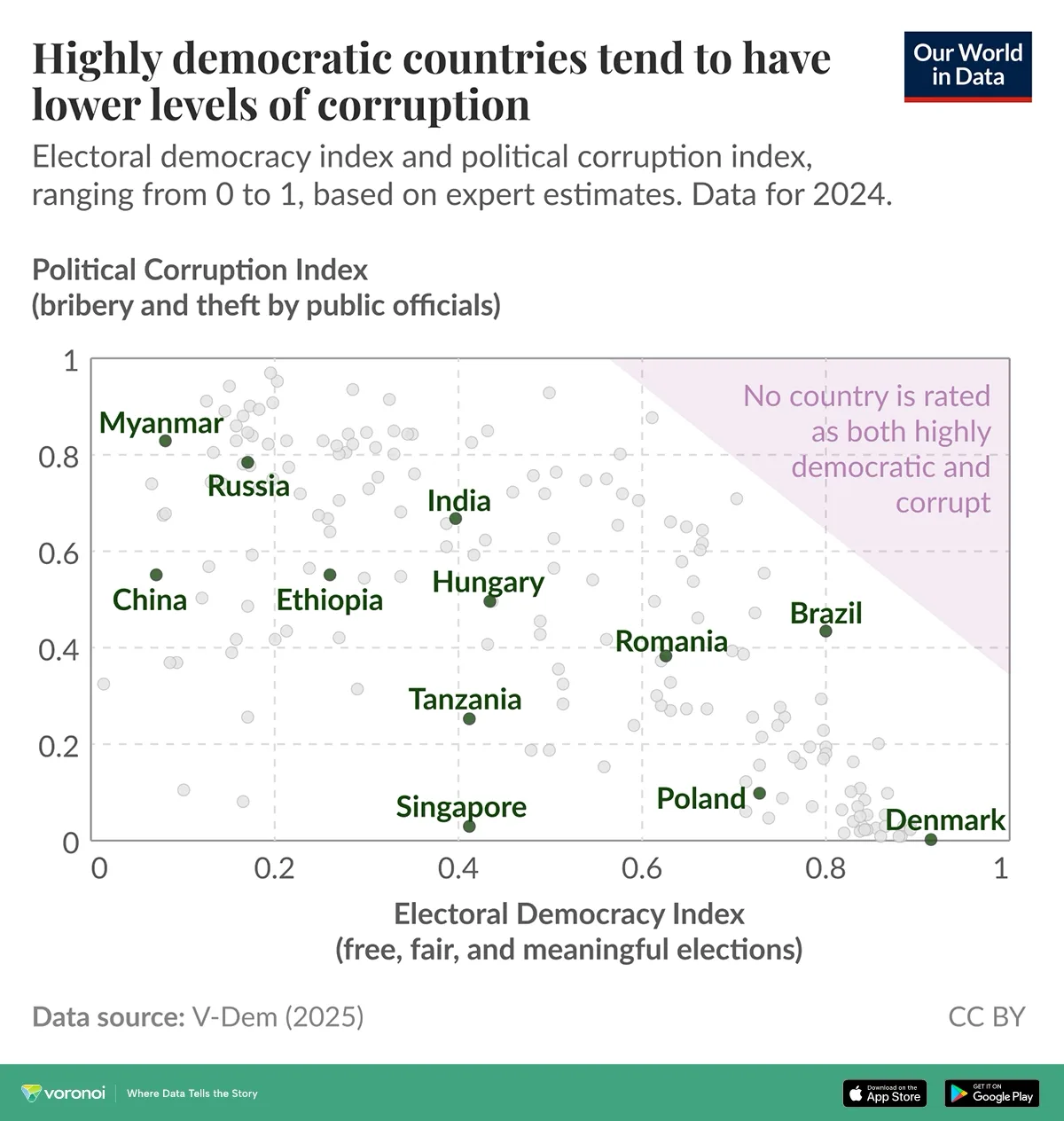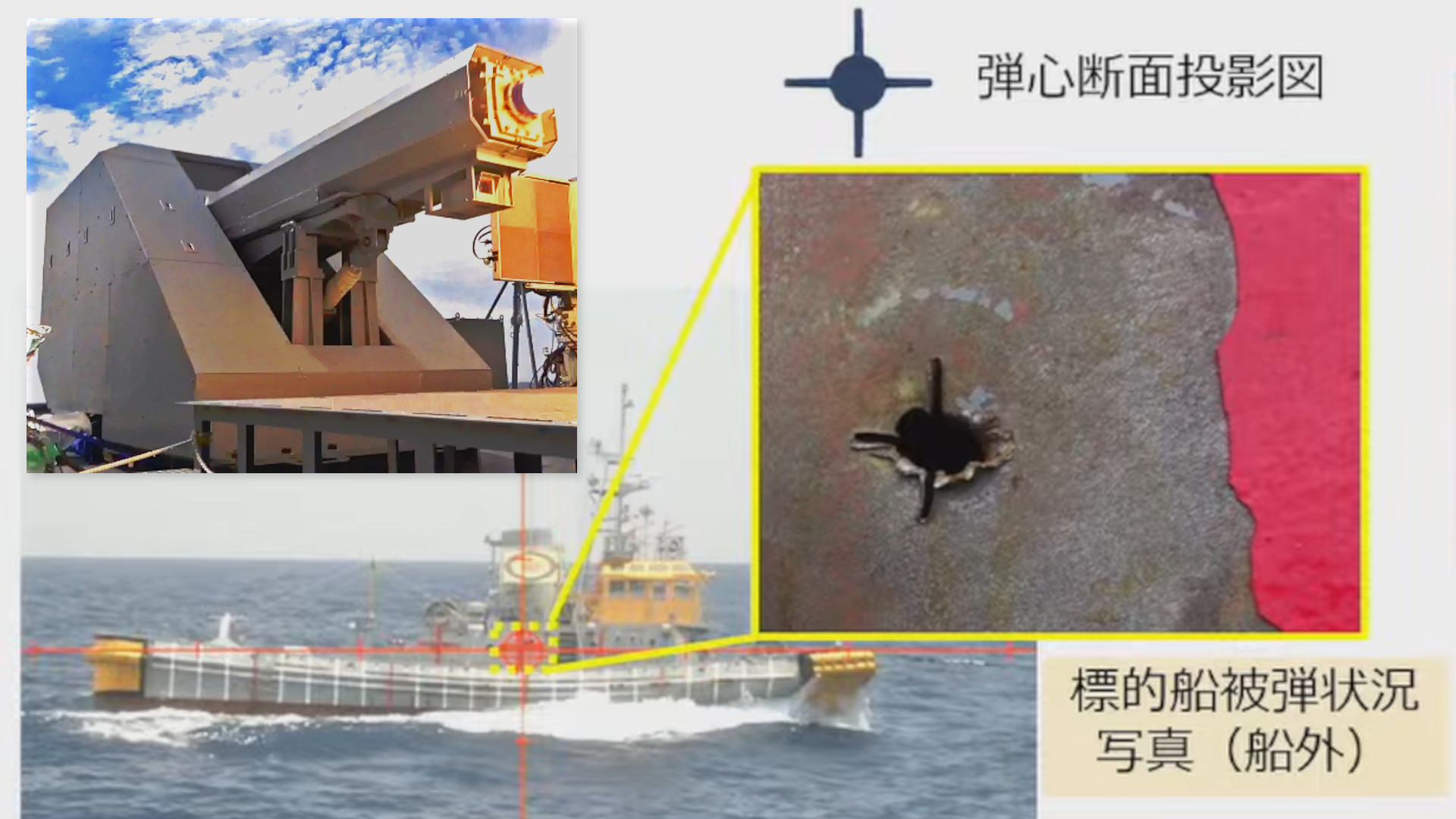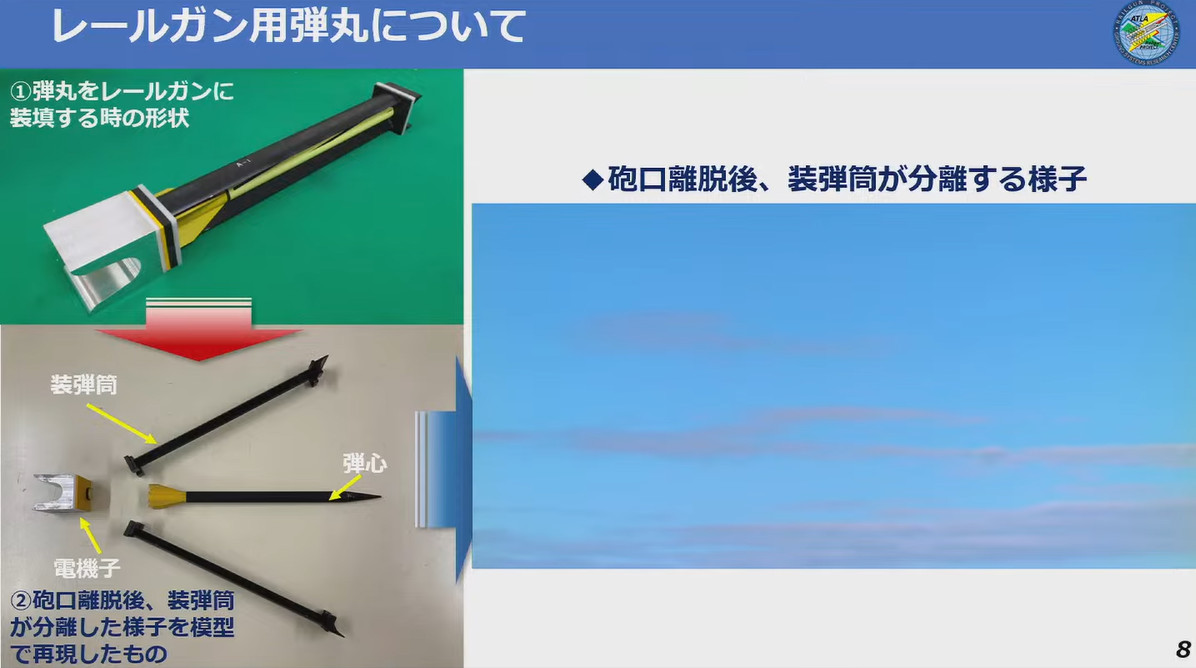Charting the Relationship Between Democracy and Corruption
[…]
- Highly democratic countries consistently report lower levels of political corruption, especially in Europe.
- No countries in the dataset are rated as both highly democratic and highly corrupt.
- Authoritarian regimes show a wide range of corruption levels, but none approach the values achieved by democracies.
How does the level of democracy in a country influence corruption?
According to new data from the Varieties of Democracy (V-Dem) project and a visualization by Our World in Data, the correlation is clear: democratic societies tend to be less corrupt.
The chart maps countries across two indices: Electoral Democracy (measuring free, fair, and meaningful elections) and the Political Corruption Index (focused on bribery and public theft), both scaled from 0 to 1.
[…]
At a glance, Denmark stands out as the best performer, with near-perfect scores for democracy and minimal corruption.
Conversely, authoritarian regimes like Myanmar, Russia, and China have low democracy scores and relatively high corruption, though corruption levels vary even among less democratic states. Interestingly, no country appears in the upper-right quadrant, combining high democracy with high corruption, emphasizing the strong inverse relationship.
Why Democracies Tend to Be Cleaner
As outlined in V-Dem’s policy brief, democracies inherently support anti-corruption mechanisms. These include:
- Independent courts and investigative bodies
- Active civil societies and free media
- Checks and balances that discourage misuse of public office
These structures make it harder for corrupt activities to go unnoticed or unpunished. In contrast, authoritarian systems often lack such safeguards, allowing corruption to flourish unchecked.
Comparing with Perceptions of Corruption
While this dataset relies on expert-based assessments, public perception also plays a role in understanding corruption. For more context, see our previous post on which countries are perceived as the most corrupt globally.
[…]
Source: Charted: The Relationship Between Democracy and Corruption




